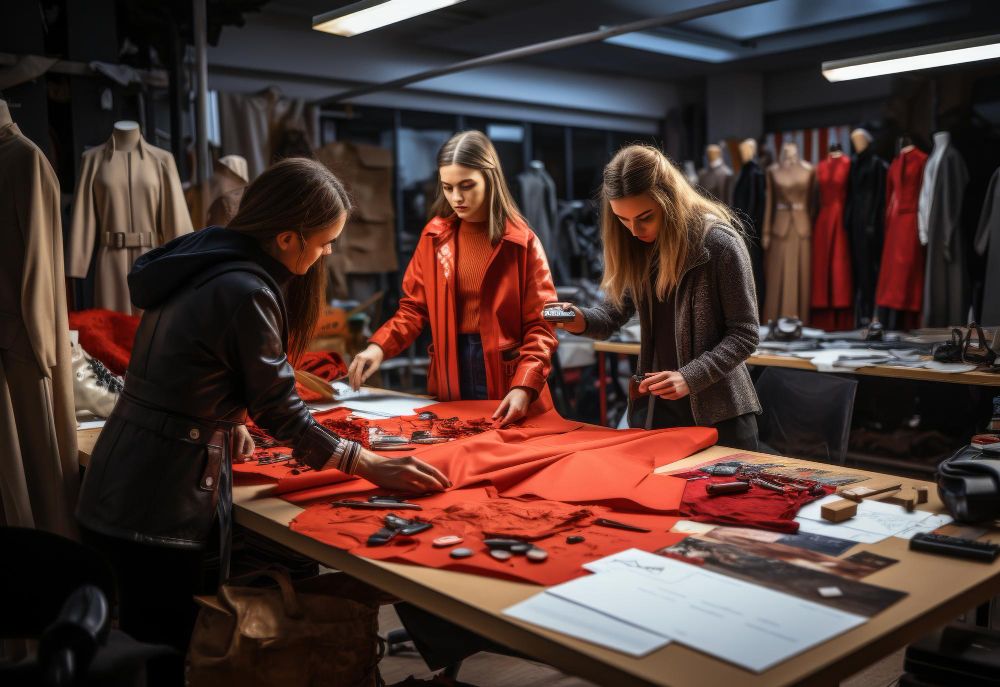Returns management in the fashion industry extends beyond mere logistics; it reflects a brand's commitment to quality and customer experience. With the rise in online shopping, the need for efficient returns processes becomes even more critical. By understanding the root causes of returns and implementing targeted strategies, fashion manufacturers can minimize financial losses and foster long-term customer loyalty.
In this comprehensive guide, we'll explore the multifaceted nature of returns in fashion manufacturing and provide detailed strategies to manage and mitigate their impact effectively.

Understanding the Dynamics of Returns in Fashion Manufacturing:
Returns in fashion manufacturing stem from a variety of factors unique to the industry:
1. Sizing Variability:
Inconsistent sizing standards across brands and regions often result in fit-related returns.
To address this, manufacturers can invest in advanced sizing technology, such as 3D body scanning or virtual fitting rooms, to provide accurate size recommendations.

2. Quality Assurance:
Defects in materials, workmanship, or finishing can lead to returns and damage the brand's reputation.
Implementing rigorous quality control measures throughout every phase of production is essential for identifying and addressing defects before products are released to the market.

3. Seasonal Trends:
Rapid shifts in fashion trends contribute to increased returns as consumer preferences evolve.
Manufacturers can mitigate this by closely monitoring market trends, collaborating with design teams, and adopting agile production processes to respond quickly to changing demands.

4. Online Shopping Behavior:
The rise of e-commerce has amplified the likelihood of returns, as customers cannot physically try on garments before purchase.
Virtual try-on tools and augmented reality solutions can help mitigate this by enabling customers to visualize how garments will look and fit before making a purchase.

Developing Tailored Returns Management Strategies:
To effectively manage returns, fashion manufacturers can implement targeted strategies:
1. Preemptive Sizing Solutions:
Invest in advanced sizing technology to provide accurate size recommendations and reduce fit-related returns.
Collaborate with data scientists and fashion technologists to develop algorithms that analyze customer data and provide personalized size suggestions.

2. Quality Control Protocols:
Establish rigorous quality control measures across every stage of the production process, starting from the procurement of materials and extending to the final inspection phase.
Conduct regular audits and quality assessments to identify and rectify defects before products reach the market.

3. Collaborative Design Feedback:
Foster collaboration between design, production, and customer service teams to incorporate customer feedback into product iterations.
Leverage various tools like customer surveys, focus groups, and social media tracking to gather valuable insights and identify areas for improvement, ensuring a holistic approach to feedback collection and enhancement.

4. Sustainable Product Development:
Prioritize sustainable materials and production methods to enhance product durability and longevity.
Educate consumers about sustainable fashion's environmental and social benefits to encourage responsible consumption and reduce returns due to dissatisfaction.

5. Efficient Reverse Logistics:
Streamline reverse logistics operations to minimize costs and transit times.
Consolidate return shipments, optimize warehouse layouts, and partner with reliable logistics providers to ensure timely processing and resolution of returns.

Leveraging Technology and Innovation:
Fashion manufacturers can leverage technology and innovation to optimize returns management:
1. AI-Powered Demand Forecasting:
Use AI algorithms to accurately forecast demand and analyze historical sales data, market trends, and customer behavior patterns.
This enables manufacturers to optimize inventory levels, reduce overstock, and minimize markdowns.
2. RFID Tracking Systems:
Implement RFID tags and tracking systems to monitor real-time inventory movement. This improves inventory accuracy, enhances visibility across the supply chain, and reduces the likelihood of returns due to stockouts or discrepancies.
3. Virtual Prototyping Tools:
Use virtual prototyping software to visualize and simulate product designs before production. This enables faster iterations, reduces design-related returns, and accelerates time-to-market for new collections.
4. Blockchain Traceability:
Leverage blockchain technology to establish end-to-end traceability in the supply chain. This enhances transparency and accountability, reduces the risk of counterfeit products, and builds consumer trust.
Conclusion

Effective returns management is essential for fashion manufacturers to sustain profitability and enhance customer satisfaction. By understanding the root causes of returns, implementing tailored strategies, and leveraging technology and innovation, manufacturers can mitigate their impact and cultivate stronger relationships with consumers.
In an industry driven by trends and consumer preferences, mastering returns management is key to long-term success and competitiveness.






